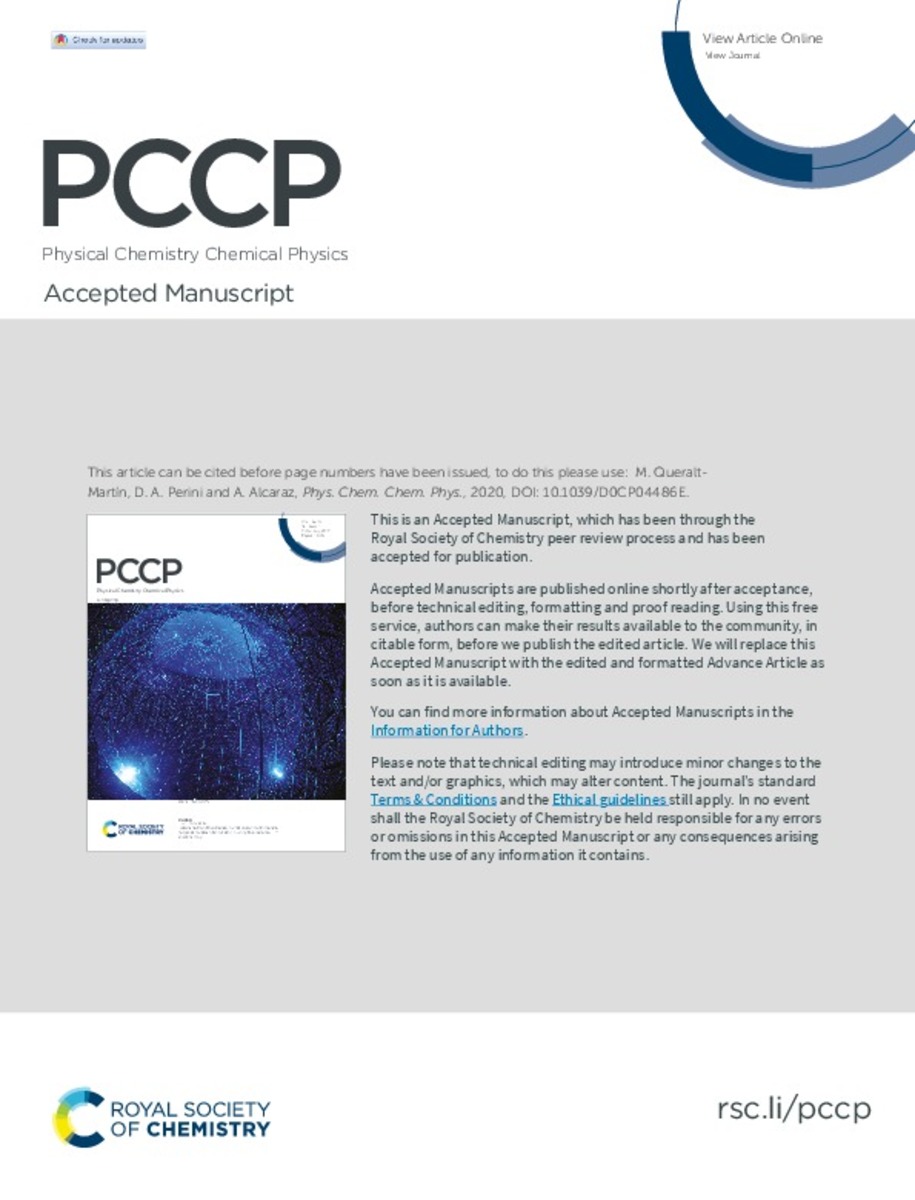| dc.contributor.author | Queralt-Martín, María | |
| dc.contributor.author | Perini, Deborah Aurora | |
| dc.contributor.author | Alcaraz, Antonio | |
| dc.date.accessioned | 2021-06-02T12:24:03Z | |
| dc.date.available | 2021-06-02T12:24:03Z | |
| dc.date.issued | 2020-12-11 | |
| dc.identifier.citation | Queralt-Martín, M., Perini, D. A., & Alcaraz, A. (2020). Specific adsorption of trivalent cations in biological nanopores determines conductance dynamics and reverses ionic selectivity. Physical Chemistry Chemical Physics. | ca_CA |
| dc.identifier.issn | 1463-9084 | |
| dc.identifier.issn | 1463-9076 | |
| dc.identifier.uri | http://hdl.handle.net/10234/193251 | |
| dc.description.abstract | Adsorption processes are central to ionic transport in industrial and biological membrane systems. Multivalent cations modulate the conductive properties of nanofluidic devices through interactions with charged surfaces that depend principally on the ion charge number. Considering that ion channels are specialized valves that demand a sharp specificity in ion discrimination, we investigate the adsorption dynamics of trace amounts of different salts of trivalent cations in biological nanopores. We consider here OmpF from Escherichia coli, an archetypical protein nanopore, to probe the specificity of biological nanopores to multivalent cations. We systematically compare the effect of three trivalent electrolytes on OmpF current–voltage relationships and characterize the degree of rectification induced by each ion. We also analyze the open channel current noise to determine the existence of equilibrium/non-equilibrium mechanisms of ion adsorption and evaluate the extent of charge inversion through selectivity measurements. We show that the interaction of trivalent electrolytes with biological nanopores occurs via ion-specific adsorption yielding differential modulation of ion conduction and selectivity inversion. We also demonstrate the existence of non-equilibrium fluctuations likely related to ion-dependent trapping–detrapping processes. Our study provides fundamental information relevant to different biological and electrochemical systems where transport phenomena involve ion adsorption in charged surfaces under nanoscale confinement. | ca_CA |
| dc.format.extent | 26 p. | ca_CA |
| dc.format.mimetype | application/pdf | ca_CA |
| dc.language.iso | eng | ca_CA |
| dc.publisher | Royal Society of Chemistry | ca_CA |
| dc.relation.isPartOf | Physical Chemistry Chemical Physics. Issue 2, 2021 | ca_CA |
| dc.rights.uri | http://rightsstatements.org/vocab/CNE/1.0/ | * |
| dc.subject | selectivity inversion | ca_CA |
| dc.subject | current modulation | ca_CA |
| dc.subject | ion channel | ca_CA |
| dc.subject | equilibrium and nonequilibrium fluctuations | ca_CA |
| dc.subject | charge regulation | ca_CA |
| dc.title | Specific adsorption of trivalent cations in biological nanopores determines conductance dynamics and reverses ionic selectivity | ca_CA |
| dc.type | info:eu-repo/semantics/article | ca_CA |
| dc.identifier.doi | https://doi.org/10.1039/D0CP04486E | |
| dc.rights.accessRights | info:eu-repo/semantics/openAccess | ca_CA |
| dc.type.version | info:eu-repo/semantics/acceptedVersion | ca_CA |
| project.funder.name | Agencia Estatal de Investigación | ca_CA |
| project.funder.name | Generalitat Valenciana | ca_CA |
| project.funder.name | Universitat Jaume I | ca_CA |
| oaire.awardNumber | PID2019-108434GB-I00/AEI | ca_CA |
| oaire.awardNumber | IJC2018-035283-I/AEI | ca_CA |
| oaire.awardNumber | GRISOLIAP/2018/061 | ca_CA |
| oaire.awardNumber | AICO/2020/066 | ca_CA |
| oaire.awardNumber | UJI-B2018-53 | ca_CA |







